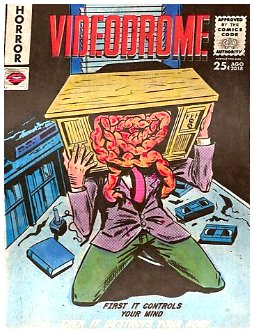cross-posted from: https://lemmy.capebreton.social/post/327322
The Trojan Room coffee pot was a coffee machine located in the Computer Laboratory of the University of Cambridge, England. Created in 1991 by Quentin Stafford-Fraser and Paul Jardetzky, it was migrated from their laboratory network to the web in 1993 becoming the world’s first webcam.
To save people working in the building the disappointment of finding the coffee machine empty after making the trip to the room, a camera was set up providing a live picture of the coffee pot to all desktop computers on the office network. After the camera was connected to the Internet a few years later, the coffee pot gained international renown as a feature of the fledgling World Wide Web, until being retired in 2001.
It went offline on August 22nd, 2001


Fun fact: Kodac had digital cameras back in the 1970s - this was declassified a few years ago. I used to know someone who flew Vulcans in the RAF, he always told me he was testing prototype Kodac long range photography at the time.
Kodac invented it and predicted the shift to digital but execs buried it because it wouldn’t be good for their film business.
They did actually make lots of digital cameras and were a pioneer in their development. But they were always a film business, not a camera business. The camera was just the vehicle for recurring payments in the form of film, an early subscription model business basically. Selling a single digital camera without the years of film purchases after was way less profitable for them. Even with a full switch to digital their business would have needed to rapidly decrease in size and scale, shuttering most of their factories aimed at producing chemicals for film. There was no real way for Kodak to continue on in the massive form it once had no matter how the switch to digital happened. Even the remaining camera industry is still shrinking in size now compared to where it was with the advent of camera phones. Market cap of Kodak in the 90s was like 30 billion not even accounting for inflation and higher valuation of stock in the 30 years since, compare that to something like Nikon who has a current market cap of 3.71 billion. So yeah, the executives were right to avoid transitioning if the goal was to maximize profits for share holders, and they’re a corporation so that’s definitely their goal, right or wrong.
Your’re mixing market cap and profits, but that’s the wrong comparison anyway.
There’s no reason Kodak couldn’t invest in sensor development while keeping film production going - their expertise in colour and image processing would’ve given them a major advantage on the sensor market.
Nikon was never a film company so they make for a poor comparison anyway, their expertise is in lenses. Fujifilm is a more direct competitor and a better match, they pioneered digital cameras and diversified their business while still producing film and as a result are still worth 22b today.
Point taken. But I think bringing profits into it just makes things even more clear. Profit margins on film were as high as 80% for Kodak at times. I doubt any digital camera based company is making anything close to those kind of margins. Bringing people away from film cameras was definitely not in their best interest, but they did make digital cameras too, only beaten to the market by two years by Fuji Film (1991 vs 1989). They kind of even still do make digital cameras apparently? No idea how much involvement they have with them, but their branding is at least on them. Even if they had been more successful in digital cameras they would have needed a massive downsizing and shuttering of most of their chemical based jobs in Rochester, NY and other places. I think a transition to pharmaceuticals or other ways to leverage their core chemical manufacturing business would have made more sense, which they kind of tried too by purchasing at least one pharmaceutical company, but not very successful either. I think a lot went wrong at Kodak, but I don’t think leaning even more heavily into digital photography would have saved them, and pushing in that direction certainly wouldn’t have looked too appealing at the time given their massive monopoly and profits in film.
Yeah Kodak decided they were a consumer imaging company, so after the end of film they invested in stuff like digital cameras, printers etc (all dead-end products, growth-wise), and sold off all their industrial products like chemicals. E.g. they spun off Eastman Chemical which is now worth $10 billion, sold off their medical imaging stuff, etc etc.
Fujifilm decided they were a technology company and they live to this day.
But imagine if they had not just the DSLR market today, but the entire smartphone camera market.
Yep, people in Rochester were pissed to learn this. Instead of riding the wave, Kodak execs turned the company into a donkey.
Definitely not the greatest of Kodak moments
Digital camera tech can be traced back to the 60s. Used in satellites.
Fijifilm and Kodak were both creating CCD tech in 1975 for military, hosiptals and aerospace when the Cromemco Cyclops released to consumers the same year.
The first colour consumer digital camera was by Sony in 1981.